Psychological Distress in Children with Surgically Corrected Congenital Heart Disease
Amalia Fagarasan1*, Flavia-Cristina Al-Akel2, Andreea Cerghit-Paler3, Brad Laura4, Liliana Gozar¹
¹Paediatric Cardiology, University of Medicine, Pharmacy, Science and Technology “George Emil Palade” of Tîrgu Mures, Romania
2Paediatric Clinic 1, Emergency Clinical County Hospital Tîrgu Mures, Romania
3Paediatric Cardiology, Emergency Institute for Cardiovascular Diseases and Transplantation, Romania
4The Bucharest University of Economic Studies, The Faculty of Finance and Banking, Bucharest, Romania
*Corresponding Author: Amalia Fagarasan, Paediatric Cardiology, University of Medicine, Pharmacy, Science and Technology “George Emil Palade” of Tîrgu Mures, Romania
Received: 21 May 2020; Accepted: 05 June 2020; Published: 12 June 2020
Article Information
Citation:
Amalia Făgărășan, Flavia-Cristina Al-Akel, Andreea Cerghit-Paler, Brad Laura, Liliana Gozar. Psychological Distress in Children with Surgically Corrected Congenital Heart Disease. Journal of Pediatrics, Perinatology and Child Health 4 (2020): 042-051.
View / Download Pdf Share at FacebookAbstract
Purpose/Aim/Objective: The purpose of this study was to investigate the neuropsychological modifications and intellectual functioning parameters (such as predictors of school performance – Intelligence quotient - IQ) of children with surgically corrected congenital heart defects. By investigating these changes, we might be able to develop a screening tool which facilitates the early detection of psychological distress, optimizes psychological therapy.
Methods: The study was conducted in the Paediatric Cardiology Clinic of Tîrgu Mure?, Romania, between 2016-2018, on 86 children with congenital heart disease (CHD), aged 6 to 17 years old, who have undergone surgical repair - compared to 102 healthy controls, matched by age. The study tested the hypothesis that children with CHD have lower intellectual function than the control group and analysed behavioural outcomes for these patients. Exclusion criteria: children aged less than 6 years old, confirmed genetic syndromes and a family history of psychiatric disorders.
Results: 59.3% of children in the eligible group were male, with a median age of 11.1 years ± 3.2 SD. The average IQ of the patients with cyanotic CHD was 84.09, while the control group had an average IQ of 91.10. Analysis of the psychological profile indicated that 33.7% of children with surgically corrected CHD had anxiety, and 11.6% of them had attention deficit disorder.
Conclusions: Children with surgically corrected cyanotic CHD had a lower IQ than the control group. Anxiety and attention deficit disorder were more frequent in children with CHD.
Keywords
Intellectual Functioning, Congenital Heart Disease, Children, Anxiety
Intellectual Functioning articles, Congenital Heart Disease articles, Children articles, Anxiety articles
Article Details
Abbreviations:
IQ-Intelligence Quotient; CHD-Congenital Heart Disease; NYHA class-New York Heart Association class; DORV-Double Outlet Right Ventricle; MAPCA-Major Aorto-Pulmonary Collateral Artery; SD-Standard Deviation; CI-Confidence Interval; OR-Odds Ratio; PD-Psychological Distress
1. Introduction
The prevalence at birth of congenital heart diseases (CHD) has a varied geographical distribution, ranging from 9,3/1000 live births in Asia to 1,5/1000 in Africa and the high impact of morbidity and mortality at all stages of life is a major public health problem [1, 2]. Advances in prenatal and postnatal diagnosis, improved surgical techniques and the introduction of hybrid approaches have resulted in important decreased of the operative mortality in the past few decades [2-5]. Many children with complex CHD have neurodevelopmental and neuropsychological impairments and the impact on their quality of life is very important.Studies on the correlation between CHD and the neuropsychological behaviour of patients are currently being conducted throughout the world in order to obtain the most accurate results that are useful for developing strategies, planning early and multilevel approach for the best social integration [6-8].
2. Material and Methods
Participants were recruited from a tertiary paediatric heart centre in Tîrgu Mures, Romania over a period of three years (2016-2018). 86 children, aged between 6 and 18 years old, who underwent surgical repair for CHD during this period were compared to 102 healthy controls. To obtain the study group, a sampling formula depending on the prevalence of CHD in Europe was used. The study group and the control group were matched by age. The primary outcome of the study was to test the hypothesis that children with CHD have reduced intellectual functioning (for example, the best predictor of school performance: IQ) when compared to a healthy population, and that the severity of CHD correlates with the degree of intellectual impairment. The secondary outcome was to analyse the behavioural patterns of children with surgically corrected CHD. Eligibility criteria: patients aged between 6 and 18 years-old with surgically corrected CHD, without any previous psychological evaluation. Exclusion criteria: patients younger than 6 years old, with confirmed genetic syndromes and/or psychiatric disorders in personal or family history.
The sample was split into three categories based on the severity of CHD, according to the classification of Task Force 1 of the 32nd Bethesda Conference and current functional status (NYHA class-New York Heart Association) [9]. First group - mild non-cyanotic models: corrected atrial septal defects, isolated ventricular septal defects. Second group - moderate non-cyanotic models: bicuspid aortic valve with stenosis, aortic regurgitation, subaortic stenosis, atrioventricular canal defects, pulmonary stenosis, aortic stenosis. The third group - cyanotic models: tetralogy of Fallot, DORV (double outlet right ventricle)-type Fallot and MAPCA (major aortopulmonary collateral artery), Ebstein anomaly, anomalous pulmonary venous drainage, transposition of the great arteries. Several instruments have also been used in order to accomplish the psychological assessment. First, we evaluated the intellectual level by Raven’s coloured progressive matrices for children aged 5 to 8 years-old and Raven’s standard progressive matrices for children older than 9 years. Secondly, the clinical interview and observation were used to assess anxiety in children older than 6 years. Hamilton Depression Scale and Children’s Depression Inventory test by Kovacs Maria PhD was used. The same psychologist assessed the children, after obtaining the written informed consent from parents. The University’s Medical Ethics Committee approved this study. For statistical calculations, we used Graph Pad 3.6 State Software, San Diego, California, USA. Data were considered as nominal or quantitative variables. Nominal variables were characterized using frequencies. Quantitative variables were tested for normality of distribution using Kolmogorov-Smirnov test and were characterized by median and percentiles (25-75%) or by mean and standard deviation (SD), when appropriate. A chi-square test was used in order to compare the frequencies of nominal variables. Quantitative variables were compared using t test, or ANOVA test. We used the Bonferroni correction in order to account for multiple comparisons. The level of statistical significance was set at p<0.05.
The odds ratio were computed to identify if children with operated CHD have different behaviour patterns compared to children belonging to the control group. The analysis was conducted based on age, sex and severity of CHD. The results were estimated considering a 95% confidence level. When situations with lack of significance and lack of computation appeared, the conclusion was extracted based on 95% statistical significant confidence level (CI does not include 1) if found relevant. Three categories were considered: 1) the externalizing behaviour, comprising attention deficit, behaviour disorders; 2) the anxiety and 3) the depression.
3. Results
The study group included 86 subjects, of which 59.3% male, divided as follows: 24 into the mild non-cyanotic category, 18 into the moderate non-cyanotic category and 44 into the cyanotic category. Median age was 11.1 years ± 3.2 SD. The Anova and the Bonferroni Correction tests were applied to analyse the IQ of the children in the control group and the IQ of the three risk models. One of the hypotheses of this study asserts that children with cyanotic CHD would have a lower IQ, and consequently lower school yield, compared to others (control group or the mild and moderate non-cyanotic). The results indicated that the mean IQ value in children with cyanotic CHD was 84.09, compared to the control group, with a mean IQ score of 91.10 (p= 0.045) (Figure 1), also considering the confidence intervals for the mean IQ scores (Table 1). When compared the IQ scores of children corresponding to the NYHA classes, no statistically significant difference was observed (p=0.95) (Figure 2). A chi-square test was used to analyse the psychological profile for the study group. Data suggested that 33.7% of children with CHD had anxiety and 11.6% had attention deficit disorders, compared to the control group (p=0.0001) (Figure 3). Analysing the three risk models in the study group appears that anxiety was similar in children with mild non-cyanotic defects (37.5%) and cyanotic CHD (35.6%) (Table 2). One of the hypotheses that could not be confirmed is the assumption that the female gender is more prone to neuropsychological disorders than male subjects (p=0.17 and p=0.84) (Figure 4 and 5).
|
Number of values |
Noncyanotic simple |
Noncyanotic moderate |
Cyanotic |
Control |
|
24 |
17 |
44 |
102 |
|
|
Minimum |
76,00 |
70,00 |
47,00 |
49,00 |
|
25% Percentile |
84,25 |
81,50 |
76,00 |
81,75 |
|
Median |
92,00 |
91,00 |
84,00 |
91,50 |
|
75% Percentile |
107,0 |
100,5 |
95,75 |
100,5 |
|
Maximum |
112,0 |
115,0 |
125,0 |
125,0 |
|
Mean |
93,96 |
92,24 |
84,09 |
91,10 |
|
Std. Deviation |
11,90 |
14,06 |
16,90 |
15,08 |
|
Std. Error of Mean |
2,430 |
3,409 |
2,547 |
1,493 |
|
Lower 95% CI |
88,93 |
85,01 |
78,95 |
88,14 |
|
Upper 95% CI |
98,98 |
99,46 |
89,23 |
94,06 |
Tabel 1: The confidence intervals of the mean IQ for the studied groups.
|
p-0.0001 chi-square test |
CHD |
Total |
|||||
|
cyanotic |
control |
moderate non-cyanotic |
mild non-cyanotic |
||||
|
Psychological distress (PD) |
Anxiety |
Number |
16 |
16 |
4 |
9 |
45 |
|
% PD |
35.6% |
35.6% |
8.9% |
20.0% |
100.0% |
||
|
% CHD |
35.6% |
15.7% |
23.5% |
37.5% |
23.9% |
||
|
Attention deficit |
Number |
6 |
9 |
1 |
3 |
19 |
|
|
% PD |
31.6% |
47.4% |
5.3% |
15.8% |
100.0% |
||
|
% CHD |
13.3% |
8.8% |
5.9% |
12.5% |
10.1% |
||
|
Depression |
Number |
0 |
7 |
0 |
0 |
7 |
|
|
% PD |
0.0% |
100.0% |
0.0% |
0.0% |
100.0% |
||
|
% CHD |
0.0% |
6.9% |
0.0% |
0.0% |
3.7% |
||
|
No pathology |
Number |
20 |
7 |
9 |
3 |
39 |
|
|
% PD |
51.3% |
17.9% |
23.1% |
7.7% |
100.0% |
||
|
% CHD |
44.4% |
6.9% |
52.9% |
12.5% |
20.7% |
||
|
Behavioral disorders |
Number |
3 |
63 |
3 |
9 |
78 |
|
|
% PD |
3.8% |
80.8% |
3.8% |
11.5% |
100.0% |
||
|
% CHD |
6.7% |
61.8% |
17.6% |
37.5% |
41.5% |
||
|
Total |
Number |
45 |
102 |
17 |
24 |
188 |
|
|
% PD |
23.9% |
54.3% |
9.0% |
12.8% |
100.0% |
||
|
% CHD |
100.0% |
100.0% |
100.0% |
100.0% |
100,0% |
||
Table 2: The psychological profile for the control group and the three subgroups of study batch.
Analysing the incidence of neuropsychological pathology by age groups, one can notice that anxiety and attention deficit are more frequently encountered in the age group of 6-10 years (p=0.042). In terms of odds ratio, when taking into account only the age category, children from the control group aged between 6 and 10 years old, and between 11 and 14 years old, are more likely to have externalizing behaviour (OR 10.28 with CI 3.47-30.40, respectively 5.18 with CI 1.81-14.77) than children with CHD, while children 6 to 10 years old from the study group are 8.28 times more likely to have anxiety behaviour (CI 1.74-39.39). When considering sex and age category, the results remained unchanged when comparing boys and girls between 6 and 10 years of age with surgically corrected CHD with similar age and sex children from the control group, as they are less likely to present externalizing behaviour. The odds ratio for the control group is 9 (CI 2.39-33.86) for 6-10 years old boys and 13.5 (CI 2.00-90.69) for 6-10 years old girls in terms of externalizing behaviour. The externalizing behaviour was more frequent in boys from the control group, 11 to 14 years old, with odds ratio 5.5 (CI 1.39-21.68). When considering sex, age category and severity of CHD, some changes were observed, while other results remain unchanged. Moderate non-cyanotic boys 6 to 10 years old are 13.5 times more likely (CI 1.34-35.98) to have anxiety behaviour compared to the control group. Analysing cyanotic group, both boys and girls 6 to 10 years old, and 11 to 14 years old children from the control group are more likely to have externalizing behaviour than other risk models matched by sex and age. The odds ratios are 10.5 (CI 2.33-47.20) for boys 6-10 years old, 9.16 (CI 1.41-59.58) for boys 11-14 years old, 27 (CI 1.97-368.4) for girls 6-10 years old and 10.28 (CI 1.01-103.95) for girls 11-14 years old.
4. Discussions
The clinical relevance of the impact of operated CHD on neuropsychological development is helpful in everyday practice. IQ measurement is required for psychoeducational assessment, being an adequate predictor of difficulties in adapting to the school system. Focused studies have shown suboptimal values and the need of special educational programs for children with surgically corrected CHD [10-12]. Among factors that influence IQ score are biological parental IQ, parental social status, medical conditions and how each factor participates is debatable. Generally, patients with CHD are at risk for developmental disorders, this risk is multifactorial and probably synergistic [13-15]. In our study, the mean IQ score of children undergoing surgery due to cyanotic CHD was below average (84.09), lower than IQ scores in the control group (p=0.045). Statistical correlation between IQ score and NYHA class did not yield a significant result (p=0.95). Studies focused on possible factors involved in the impaired cognitive development of children with severe CHD have shown the role of reduced cerebral perfusion before and after surgery, prolonged hypoxia, exposure to anesthesia and repeated surgical interventions [15-18]. Pizarro C. et al. did not identify a clear correlation between the utilized surgical techniques and children’s intellectual functioning [19]. In their study on 228 Swedish children with CHD, treated either by a surgical or an endovascular approach, Ryberg C. et al. had similar results on overall intellectual functioning [20]. Anxiety disorder is generally described in children with chronic conditions because of exposure to stress caused by frequent hospitalization, and the physical limitations imposed by the illness itself. The outcome/ consequences of these disorders are the tendency for isolation and a sense of being rejected by their peers [21]. Johnson B, showed that children with CHD have more behavioural problems compared to their healthy counterparts [22]. Analysis of the psychological and emotional profile of patients included in our study showed that 33.7% of children with operated CHD had anxiety, compared to the control group where anxiety was present in 15.7% of the cases (p=0.0001) and 11.6% of children in the study group had attention deficits. On the other hand, the odds ratios revealed that both boys and girls from the control group, aged 6 to 10 years old, and 11 to 14 years old respectively, are more likely to have an externalizing behaviour than children with cyanotic CHD, matched by age and sex. Subgroup analysis revealed that the frequency of anxiety was similar among children with mild non-cyanotic defects (37.5%) and cyanotic models (35.6%), meaning that the cardiac condition is a trigger for anxiety, especially for moderate non-cyanotic boys 6 to 10 years old. Correlation of NYHA class severity (as a distress trigger due to the inability to participate in intensive physical activities), of IQ and of psychological and emotional disorders did not appear statistically significant (p=0.10). Behavioural disorders were more frequent in the control group (61.8%). Adolescence has been described as a particularly vulnerable period for children with CHD, and has been associated with a higher risk of developing psychological and emotional disorders [23-26]. In our study anxiety and attention deficits are more frequently encountered in the age group of 6-10 years old (p=0.042) and the lack of specialized intervention for this age group will aggravate the disorder. It is accepted that there is a need for the adequate assessment and neuropsychological care of children with CHD based on risk categories, in order to develop an Individualized Education Program which improves the quality of life of these patients.
Study limitations: a relatively small cohort, but comprising all patients in the central part of Romania (exhaustive research). A limitation of the study is the lack of correlation of IQ score with parental social status or parental IQ score, or correlation of age at the time of surgery and IQ score or psychological and emotional changes.
5. Conclusions
Children with surgically corrected cyanotic congenital heart disease have lower IQ scores than the control group. Anxiety and attention deficit disorders were more frequent in children with CHD.
Acknowledgements
The authors thank Anca Gherasim for her careful psychological assessment.
Funding
No funding was received.
Conflicts of Interests
The authors declare that they have no conflict of interest.
References
- Van der Linde DM, Konings EM, Slager MA, et al. Birth prevalence of congenital heart disease worldwide: a systematic review and meta-analysis. Journal of the American College of Cardiology 58 (2011): 2241-2247.
- Jenkins KJ, Botto LD, Correa A, et al. Public Health Approach to Improve Outcomes for Congenital Heart Disease Across the Life Span. Journal of the American Heart Association 8 (2019): 16.
- Corno AF, Utens EMW. Neuro-Development and Psychological Issues in Congenital Heart Defects. Frontiers in Pediatrics 5 (2018): 297.
- Gupta A, Amin Z. Popular Hybrid Congenital Heart Procedures without Cardiopulmonary Bypass. Frontiers in Surgery 4 (2017): 9.
- Wang Y, Liu G, Canfield MA, et al. National Birth Defects Prevention Network. Racial/ethnic differences in survival of United States children with birth defects: a population-based study. Journal of Pediatrics 166 (2015): 819-826.
- Kasmi L, Bonnet D, Montreuil M, et al. Neuropsychological and Psychiatric Outcomes in Dextro-Transposition of the Great Arteries across the Lifespan: A State-of-the-Art Review. Pediatrics 5 (2017): 59.
- Calderon J, Bellinger DC. Executive function deficits in congenital heart disease: why is intervention important? Cardiology in Young 25 (2015): 1238-1246.
- Maria Drakouli, Konstantinos Petsios, Margarita Giannakopoulou, et al. Determinants of quality of life in children and adolescents with CHD:a sistemic review. Cardiology in Young 25 (2015): 1027-1036.
- Care of the Adult with Congenital Heart Disease. Presented at the 32 (nd) Bethesda Conference, Maryland, oct.2-3, 2000. Journal of the American College of Cardiology 37 (2001): 1161-1198.
- Sarrechia I, Miatton M, Francois K, et al. Neurodevelopmental outcome after surgery for acyanotic congenital heart disease. Research in Developmental Disabilities 45-46 (2015): 58-68.
- Snookes SH, Gunn JK, Eldridge BJ, et al. A systematic review of motor and cognitive outcomes after early surgery for congenital heart disease. Pediatrics 125 (2010): 818-827.
- Wernovsky G, Licht DJ. Neurodevelopmental Outcomes in Children With Congenital Heart Disease-What Can We Impact? Pediatric Critical Care Medicine 17 (2016): 232-242.
- Marino BS, Lipkin PH, Peacock G, et al. Neurodevelopmental Outcomes in Children with Congenital Heart Disease: Evaluation and Management A Scientific Statement from the American Heart Association. Circulation 126 (2012): 1143-1172.
- Mulkey SB, Bai S, Luo C, et al. School-Age Test Proficiency and Special Education after Congenital Heart Disease Surgery in Infancy. Journal of Pediatrics 178 (2016): 47-54.
- Andropoulos DB, Ahmad HB, Haq T, et al. The association between brain injury, perioperative anesthetic exposure, and 12-month neurodevelopmental outcomes after neonatal cardiac surgery: a retrospective cohort study. Paediatric Anaesthiology 24 (2014): 266-274.
- Neal AE, Stopp C, Wypij D, et al. Predictors of health-related quality of life in adolescents with tetralogy of Fallot. Journal of Pediatrics 166 (2015): 132-138.
- Snookes SH, Gunn JK, Eldridge BJ, et al. A systematic review of motor and cognitive outcomes after early surgery for congenital heart diseases. Pediatrics 125 (2010): 818-827.
- Pizarro C, Sood ED, Kerins Pet, et al. Neurodevelopmental outcomes after infant cardiac surgery with circulatory arrest and intermittent perfusion. Annals of Thoracic Surgery 97 (2014): 119-124.
- Ryberg C, Sunnegårdh J, Thorson M, et al. Intellectual Functioning in Children with Congenital Heart Defects Treated with Surgery or by Catheter Interventions. Frontiers in Pediatrics 4 (2016): 113.
- Gupta S, Mitchell I, Giuffre M, et al. Covert fears and anxiety in asthma and congenital heart disease. Child Care Health Development 27 (2001): 335-348
- Johnson B. Behaviour Problems in Children with Congenital Heart Disease. BMH Medical Journal 2 (2015): 14-19.
- DeMaso DR, Calderon J, Taylor GA, et al. Psychiatric Disorders in Adolescents with Single Ventricle Congenital Heart Disease. Pediatrics 139 (2017): e20162241.
- Holland JE, Cassidy AR, Stopp C, et al. Psychiatric Disorders and Function in Adolescents with Tetralogy of Fallot. Journal of Pediatrics 187 (2017): 165-173.
- Luyckx K, Rassart J, Goossens E, et al. Development and persistence of depressive symptoms in adolescents with CHD. Cardiology in Young 26 (2016): 1115-1122.
- Müller J, Hess J, Hager A. General anxiety of adolescents and adults with congenital heart disease is comparable with that in healthy controls. International Journal of Cardiology 165 (2013): 142-145.
- Celermajer D, Mugur N, Hornung T, et al. Members of the Paediatric and Congenital Council. Adult congenital heart disease (ACHD). Recommendations for standards of care. The Cardiac Society of Australia and New Zealand (CSANZ) (2013).

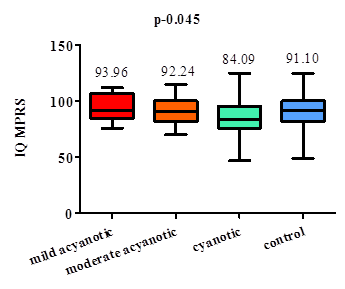
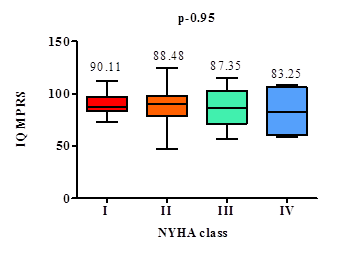
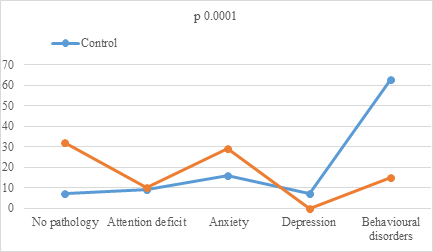
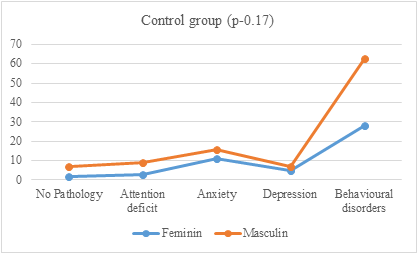
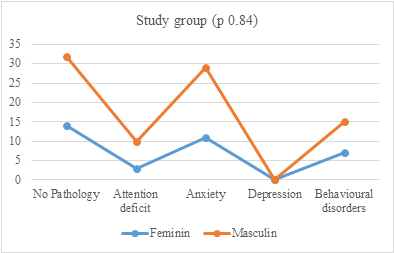

 Impact Factor: * 4.8
Impact Factor: * 4.8 Acceptance Rate: 69.70%
Acceptance Rate: 69.70%  Time to first decision: 10.4 days
Time to first decision: 10.4 days  Time from article received to acceptance: 2-3 weeks
Time from article received to acceptance: 2-3 weeks 